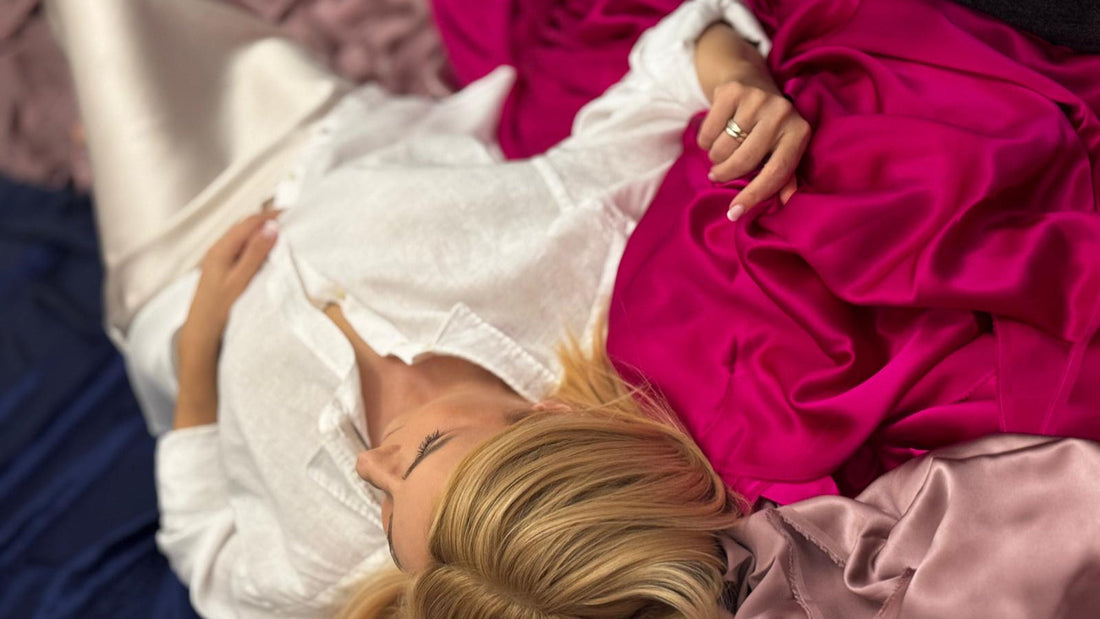
How to Care for Silk
Share
Almost no fabric is as luxurious as silk. Not only is it noble, but it's also functional: it cools in the summer and warms in the winter. Silk pillowcases should be a fixture in your bedroom because they minimize friction, preventing hair breakage and protecting the skin from irritation. The unique structure of silk means it doesn't absorb cosmetics as much as other fabrics, allowing your nighttime skincare to stay on your face and not on the pillowcase.
One downside of this delicate natural material is that it's somewhat harder to clean than cotton or synthetic fibers. This guide will teach you everything about properly washing silk so that it remains shiny for a long time.
Washing: Hand wash or machine wash on a gentle cycle at a temperature up to 30°C.
Avoid fabric softeners: They can weaken silk fibers and affect its durability, primarily making it dull.
Drying: Do not wring silk. Dry flat in a shaded area, avoiding direct sunlight.
Ironing: If necessary, iron silk at a low temperature, preferably through an additional layer of fabric or use a steamer.
Remember: A silk pillowcase, especially in intense colors, may bleed. It's a natural, noble fabric that easily takes on dye, but to maintain its color, handle it gently as it's harder to clean than cotton or synthetic fibers.
How to protect a silk pillowcase before first use?
To set the dye and reduce the risk of bleeding, perform a soaking process in a vinegar solution.
1. Prepare the solution:
• Add 1–2 tablespoons of vinegar to a bowl with 1 liter of cold water.
• Use only white vinegar, as other types, like apple cider, may contain dyes that can affect the color of the silk.
2. Soak the pillowcase:
• Fully immerse the pillowcase in the solution and leave it for 5–10 minutes (intense colors for over 5 minutes).
• Gently move the fabric to ensure the solution reaches all fibers.
3. Rinse:
• After soaking in vinegar, rinse the pillowcase in clean, cold water to remove excess vinegar.
4. Dry:
• Gently press out excess water (do not wring) and lay the pillowcase on a towel to dry naturally. Avoid sun and dryers.
5. Repeat if necessary:
• If the pillowcase still bleeds after the first soak, repeat the process until excess dye is completely removed.
After such treatment, your silk pillowcase is ready to use!